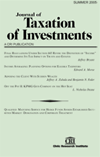Section 1031 Qualified Intermediaries in the New Economy
Author: Bradley T. Borden.
Source: Volume 27, Number 01, Fall 2009 , pp.86-93(8)

< previous article |return to table of contents
Abstract:
Recent events and the new economy promise to alter the manner in which Section 1031 qualified intermediaries function and the expectations property owners have for qualified intermediaries. Section 1031 allows property owners to exchange property tax free. Rarely do property owners swap properties, so to qualify for Section 1031 tax-free treatment they generally use a qualified intermediary as an exchange facilitator to avoid prohibited constructive receipt of exchange funds. The qualified intermediary structure interposes the qualified intermediary into the exchange as an exchange facilitator. In good economic times, the flow of exchange deals was good and increased for many qualified intermediaries. Qualified intermediaries held significant amounts of exchange funds, the deals flowed in with no apparent end in sight, the number of qualified intermediaries proliferated, and qualified intermediaries began to look for ways to increase their profitability. The qualified intermediary industry is unregulated. The lack of regulation presented opportunities for schemes and lax investment practices that ultimately depleted the exchange fund balances of some prominent qualified intermediaries—and cost exchangers hundreds of millions of dollars of exchange proceeds. In hindsight, exchangers and qualified intermediaries could have taken steps to avoid those problems. The knowledge gained from the recent qualified intermediary collapses provides insight into both the actions that qualified intermediaries should take to tighten their operations and the precautions exchangers should take in choosing a qualified intermediary.Keywords: IRS Section 1031; tax-free like-kind exchanges; exchange facilitators; qualified intermediaries;
Affiliations:
1: Washburn University School of Law.